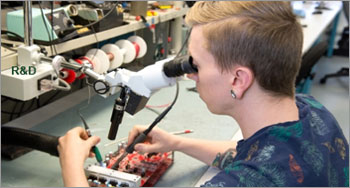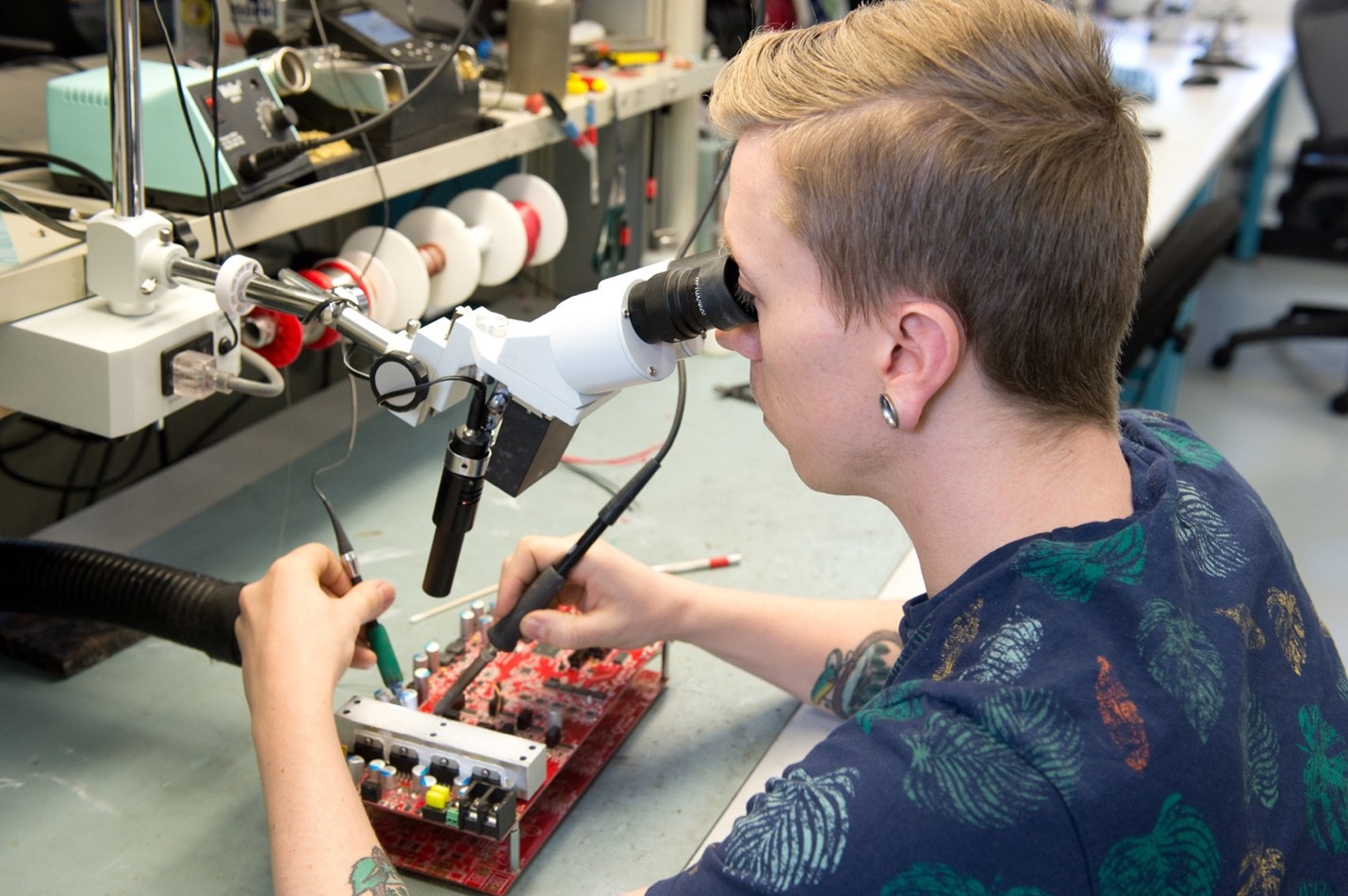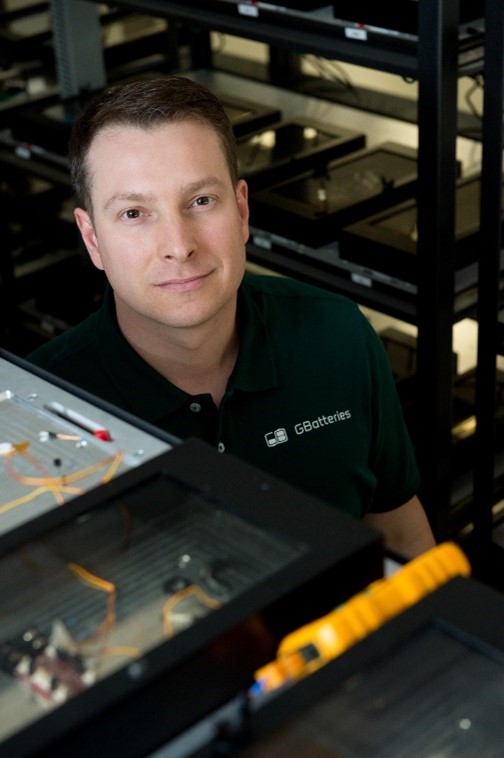Ultra-fast charging of lithium-ion cells for the mass global adoption of electric vehicles

Assembly of GBatteries’ proprietary battery test equipment designed for smart, adaptive charging
Sector - Focus area
Transportation - High Voltage Power Electronics
Status
Completed
Partners
Industrial Research Assistance Program
Fund
Energy Innovation Program
Year
2019
EIP Contribution
$ 2,755,500
Project Total
$ 4,282,060
Location
Ottawa, ON
Find out more
Lead Proponent
GBatteries
Project Background
GBatteries’ charging technology – the Active Battery Management System (ABMS) – has the potential to accelerate the adoption of EVs by reducing charge time and maximizing cycle life of lithium-ion batteries. The project objective was to optimize ABMS for automotive grade batteries and demonstrate fast charge on electric vehicle (EV) battery packs.
By enabling fast charge and long life for Li-ion batteries, their goal is to improve the value proposition of EVs to car buyers and manufacturers, divert combustion engine vehicle sales, and contribute to significant reduction in greenhouse gas emissions in the transportation sector.
EV manufacturers provided GBatteries with battery cells with real-world automotive applications for development, testing, and demonstration of ABMS towards specific performance targets. GBatteries also collaborated with an EV fast-charger manufacturer to integrate GBatteries’ algorithms with commercializable hardware to create a fast-charger prototype capable of deploying ABMS for micro-mobility and later EV markets.
Results
Over the course of this project, GBatteries developed fast charge algorithms to achieve performance targets outlined by EV manufacturers on single cell batteries. Key charge parameters have been identified to realize three times improvement in cycle life over industry standard charging protocols, while matching capacity delivery and charge time.
To gauge transferability of cycling performance from single cell to pack configurations, GBatteries designed and assembled its own small-form battery packs using the same single cell battery models. To accommodate pack-level battery research a detached high-power battery test lab was assembled. Data collected to date indicates that the same cycle life improvements developed from single cells are transferable to pack configurations without re-optimization at the pack-level. This result has positive implications for the ease and cost of optimizing ABMS for a wide variety of models of EV battery packs and modules.
To further progress their technological readiness, a working prototype of a fast-charger capable of deploying ABMS charging algorithms for micro-mobility markets was developed with the aid of a fast-charge manufacturer.
To achieve these results, 27 highly qualified personnel were trained and employed over the course of this project, creating jobs in engineering, technical, computer science, and battery research fields.
Benefits to Canada
This project offers multiple benefits for Canada, its citizens, and a diverse group of stakeholders, encompassing environmental, societal, and economic realms. Key benefits include:
-
Encouraging EV adoption:
Their aim is to expedite the intake of passenger and freight EVs nationally and globally.
-
Enhancing air quality and health:
By stimulating EV usage, we can reduce emissions, particularly in urban, high-traffic areas, thereby improving air quality and public health through decreased respiratory disease risk.
-
Mitigating battery disposal hazards:
Their technology prolongs battery life, yielding cost savings for EV users, while lessening environmental risks linked to early disposal and recycling of materials in lithium-ion batteries, including non-recyclable rare earth metals. It thus dampens ecological consequences of battery waste.
In line with Canada’s sustainable future vision, this project brings value to stakeholders like local communities, businesses, and environmentalists.
Next steps
As their project continues, GBatteries’ key objectives include:
- Demonstration of their technology on EV battery packs: They are working closely with commercialization and deployment partners to demonstrate ABMS on various EV battery packs. This will showcase the real-world applicability of their innovations and contribute to accelerated adoption by automotive manufacturers.
- Further improvement to cycle life and charge times: As they seek to optimize and enhance their technology, they will continue researching and developing methods to improve the battery’s cycle life and reduce charging times for EVs. Their goal is to provide a solution that is both practical and sustainable for the end-user and the environment.
- Market development for their technology: As their technology matures, they aim to facilitate its widespread adoption.
Technology in Action

Assembly of a custom build circuit board for a fast charging battery system.
In Their Words
“Participating in the BESC program has been a significant milestone for GBatteries. The support provided helped us in fast-tracking our research and development process, allowing us to make meaningful advances in battery charging techniques that have the potential to revolutionize the EV industry by providing faster, more efficient charging solutions, and enhancing battery life. The collaboration opportunities provided by BESC have been invaluable in propelling our business growth and innovation, opening doors to partnerships, resources, and constructive engagements that were pivotal in our progress. With further developments underway, we are excited about the potential of our technology – by improving EV usability and encouraging wider adoption, we are working to push towards a more sustainable and cleaner future.”

Kostyantyn Khomutov, CEO
Page details
- Date modified: